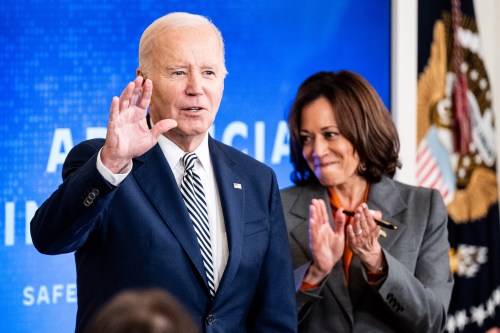President Biden recently issued the Executive Order (EO) focusing on the Safe, Secure, and Trustworthy Development and Use of Artificial Intelligence. This executive order covers various critical areas such as privacy, content verification, and immigration of tech workers, among others. While the EO establishes essential guardrails for AI usage to safeguard people’s rights, it has inherent limitations since executive actions cannot establish new agencies or grant additional regulatory powers over private companies. The recent draft memorandum from the Office of Management and Budget (OMB) complements the EO by providing further guidance for federal agencies to manage risks and ensure accountability in AI innovation.
Both the EO and the OMB memo emphasize the importance of hard accountability by directing federal agencies to enforce civil rights protections against algorithmic discrimination and requiring companies developing AI models to adhere to specific safety, evaluation, and reporting procedures. The focus is on establishing guardrails to mitigate potential harms from systems like hiring algorithms and medical AI devices. These directives aim to make the federal government a model for accountable AI governance and pave the way for future legislative actions to enforce accountability in AI use.
The governance of AI is depicted as an iterative process, building on previous administration efforts and aiming to develop additional guidance for various AI applications. While the EO sets guidelines for federal agencies on using AI responsibly, the OMB memo outlines minimum risk management practices, impact assessments, and accountability processes that agencies must adhere to before and during AI system usage. These requirements signify a significant step towards establishing a comprehensive accountability ecosystem for AI governance.
In the private sector, the EO influences how companies develop and deploy AI systems by directing agencies to protect civil rights, civil liberties, and consumer privacy. The focus on generative AI systems, such as ChatGPT, highlights the need for preemptive testing and reporting to address safety concerns. The EO also addresses worker impacts, supporting employees during AI transitions and directing federal contractors to implement nondiscriminatory hiring practices involving AI technologies.
To implement these directives effectively, the EO introduces the role of Chief AI Officer (CAIO) within federal agencies to coordinate AI use, promote innovation, and manage risks. However, recruiting the necessary talent with interdisciplinary expertise remains a challenge. While the EO lays out a comprehensive governance model for AI, certain areas such as national security applications, banning harmful practices, and addressing AI’s environmental impact require further consideration.
Overall, the EO and OMB memo provide a roadmap for accountable AI governance, emphasizing the protection of rights and safety in AI applications. The administration’s commitment to advancing the public interest through AI regulation sets the stage for future legislative actions and international alignment on AI policies.






